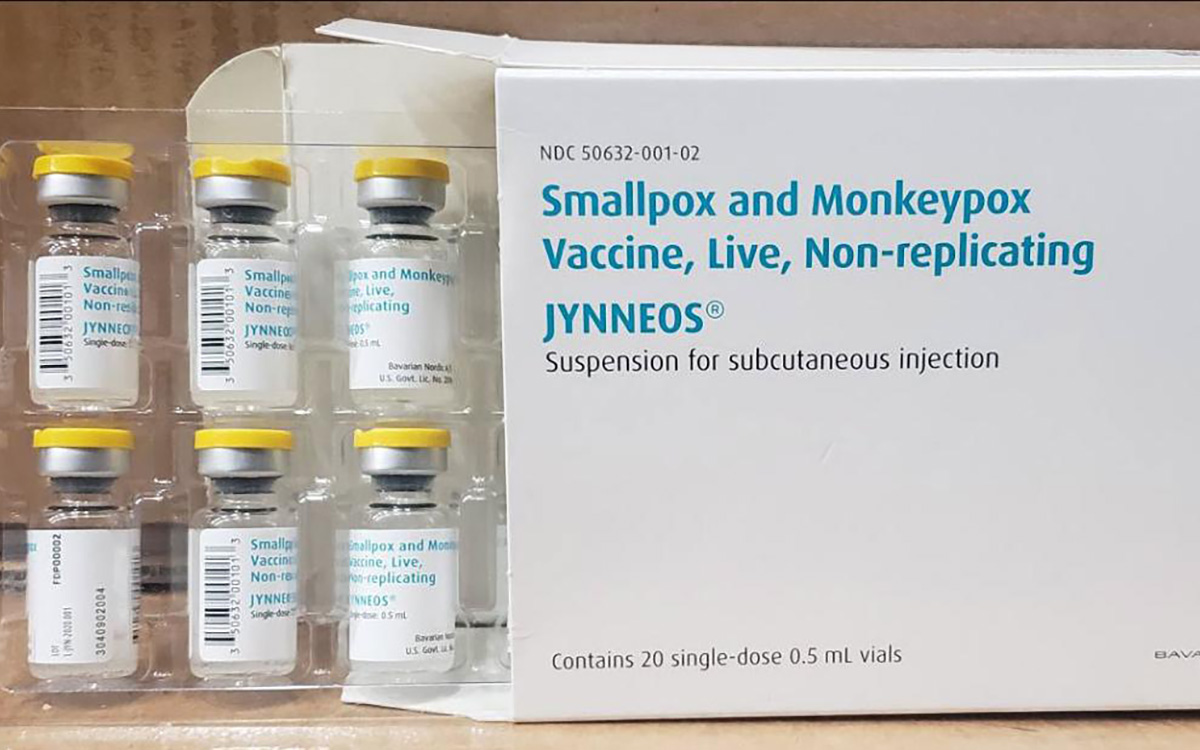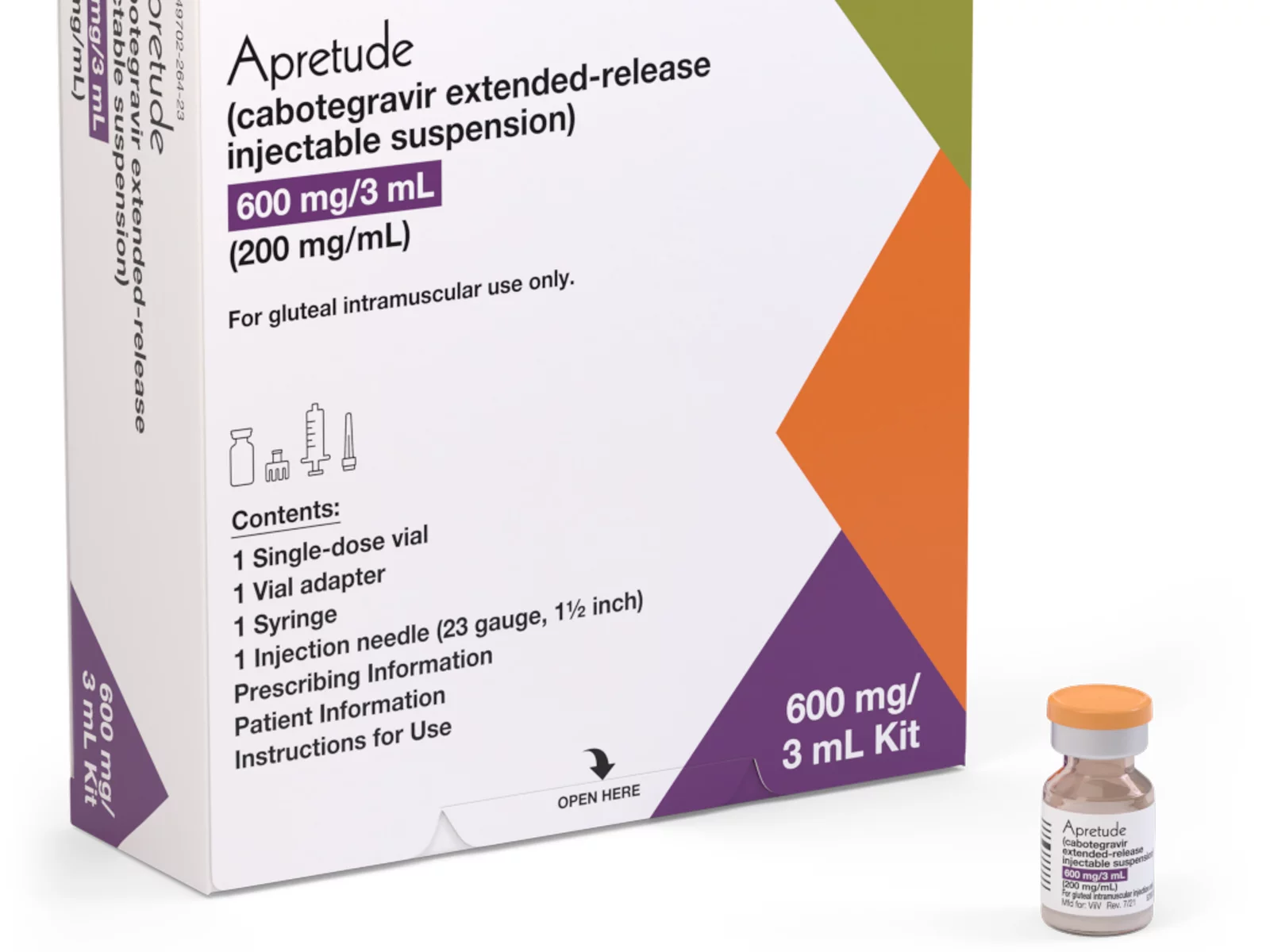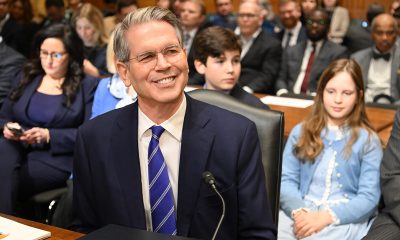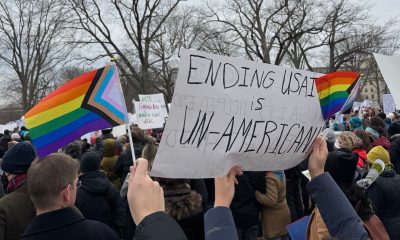Health
Health news in brief
U.S. senators seek review of FDA’s gay blood ban & more
U.S. senators seek review of FDA’s gay blood ban
WASHINGTON — A group of 18 U.S. senators, led by John Kerry (D-Mass.), wrote last month to the Food & Drug Administration, the agency that regulates the nation’s blood supply, to review what they called “outdated, medically and scientifically unsound deferral criteria” that exclude gay donors, according to a report in the Kansas City Star.
The FDA said it is “actively engaged in re-examining the issue of blood donor deferral” among gay men.
“Taking into account the current body of scientific information … we are considering the possibility of pursuing alternative strategies that maintain blood safety,” a recent FDA statement said.
A Health & Human Services advisory committee on blood safety plans to review the issue in June.
The federal government mandated a lifetime ban on blood donations from men who have had sex with men in the 1980s. The rationale was that HIV can be spread through blood transfusions, and gay men are more likely to carry HIV than the general population. But increasingly sophisticated tests are making it easier to detect HIV and a movement has begun seeking an end to the lifetime ban and bring the rules for gay blood donors more in line with restrictions placed on other potentially risky donors, according to the Kansas City Star report.
The FDA’s ban began in 1983, when blood collection facilities began telling donors to refrain from donating blood if they were in any of the groups at high risk of AIDS infection. But the rule for gay men excludes blood donations by all men who have had sex with another man, even one time, since 1977.
Obscure California law seeks cure for homosexuality
LOS ANGELES — A quirky California law requires health experts to find a cure for homosexuality and one lawmaker is working to overturn it.
Bonnie Lowenthal, author of Assembly Bill 2199, represents Long Beach in the California Assembly, and wrote a piece this week for the Los Angeles Times about the origins of the obscure 60-year-old law.
The law came in response to public outcry over sex crimes in California, specifically the molestation-murder of a 6-year-old girl, Lowenthal wrote, but the murderer was not a gay man and there was no connection between the crime and homosexuality.
“Well-meaning California legislators passed a law that not only required health officials to seek ‘the causes and cures of homosexuality,’” she wrote, “but likened people who are gay to child molesters. Amazingly, it’s still on the books. You might call it ‘Linda’s Law.’”
Linda Joyce Glucoft went out to play after dinner on Nov. 14, 1949, and never came home. She was raped and murdered by the grandfather of one of her playmates, a repeat sex offender, according to Lowenthal, and even before the killer had been sentenced to death, Gov. Earl Warren called a special session of the Legislature to deal with the issue of sexual predators. Lawmakers ordered the state’s mental hospitals and universities to find a solution.
“It was at this step, as the Legislature defined the role of science in solving the ‘sexual psychopath’ problem, that gay people — simply because they vexed the psychiatric profession — were swept up in the net,” Lowenthal explained. “In 1950, homosexuality remained, officially, a mental disorder. So when the Legislature promised funding for a study into the causes and cures of sexual deviance, it was, tragically, natural to add homosexuality to the list.”
One of the bills Warren signed included a command that the “Department of Mental Hygiene plan, conduct and cause to be conducted scientific research into the causes and cures of sexual deviation, including deviations conducive to sex crimes against children, and the causes and cures of homosexuality, and methods of identifying potential sex offenders.”
Assembly Bill 2199, authored by Lowenthal, seeks to overturn the law. It was set for its first hearing this week after DC Agenda deadline.
San Francisco backs early antiretroviral drugs for HIV
SAN FRANCISCO — The city’s Department of Public Health is expected to release new guidelines that call for HIV-positive patients to begin taking antiretroviral drugs as soon as they are diagnosed, the New York Times reported.
Previous guidelines directed physicians to delay antiretroviral treatment, due to potential side effects.
The new policy follows research that early HIV treatment can help patients live longer and decrease their likelihood of experiencing health complications such as cancer, heart disease or kidney failure, the Times reported.
Under the new guidelines, people who test positive for HIV will be offered combination antiretroviral therapy. Antiretroviral drugs currently cost about $12,000 per year and account for about $350 million of the California AIDS Drug Assistance Plan’s budget, according to the Times story.
Monkeypox
US contributes more than $90 million to fight mpox outbreak in Africa
WHO and Africa CDC has declared a public health emergency

The U.S. has contributed more than $90 million to the fight against the mpox outbreak in Africa.
The U.S. Agency for International Development on Tuesday in a press release announced “up to an additional” $35 million “in emergency health assistance to bolster response efforts for the clade I mpox outbreak in Central and Eastern Africa, pending congressional notification.” The press release notes the Biden-Harris administration previously pledged more than $55 million to fight the outbreak in Congo and other African countries.
“The additional assistance announced today will enable USAID to continue working closely with affected countries, as well as regional and global health partners, to expand support and reduce the impact of this outbreak as it continues to evolve,” it reads. “USAID support includes assistance with surveillance, diagnostics, risk communication and community engagement, infection prevention and control, case management, and vaccination planning and coordination.”
The World Health Organization and the Africa Centers for Disease Control and Prevention last week declared the outbreak a public health emergency.
The Washington Blade last week reported there are more than 17,000 suspected mpox cases across in Congo, Uganda, Kenya, Rwanda, and other African countries. The outbreak has claimed more than 500 lives, mostly in Congo.
Health
Mpox outbreak in Africa declared global health emergency
ONE: 10 million vaccine doses needed on the continent

Medical facilities that provide treatment to gay and bisexual men in some East African countries are already collaborating with them to prevent the spread of a new wave of mpox cases after the World Health Organization on Wednesday declared a global health emergency.
The collaboration, both in Uganda and Kenya, comes amid WHO’s latest report released on Aug. 12, which reveals that nine out of every 10 reported mpox cases are men with sex as the most common cause of infection.
The global mpox outbreak report — based on data that national authorities collected between January 2022 and June of this year — notes 87,189 of the 90,410 reported cases were men. Ninety-six percent of whom were infected through sex.
Sexual contact as the leading mode of transmission accounted for 19,102 of 22,802 cases, followed by non-sexual person-to-person contact. Genital rash was the most common symptom, followed by fever and systemic rash.
The WHO report states the pattern of mpox virus transmission has persisted over the last six months, with 97 percent of new cases reporting sexual contact through oral, vaginal, or anal sex with infected people.
“Sexual transmission has been recorded in the Democratic Republic of Congo among sex workers and men who have sex with men,” the report reads. “Among cases exposed through sexual contact in the Democratic Republic of the Congo, some individuals present only with genital lesions, rather than the more typical extensive rash associated with the virus.”
The growing mpox cases, which are now more than 2,800 reported cases in at least 13 African countries that include Kenya, Uganda, Rwanda, and prompted the Africa Centers for Disease Control and Prevention this week to declare the disease a public health emergency for resource mobilization on the continent to tackle it.
“Africa has long been on the frontlines in the fight against infectious diseases, often with limited resources,” said Africa CDC Director General Jean Kaseya. “The battle against Mpox demands a global response. We need your support, expertise, and solidarity. The world cannot afford to turn a blind eye to this crisis.”
The disease has so far claimed more than 500 lives, mostly in Congo, even as the Africa CDC notes suspected mpox cases across the continent have surged past 17,000, compared to 7,146 cases in 2022 and 14,957 cases last year.
“This is just the tip of the iceberg when we consider the many weaknesses in surveillance, laboratory testing, and contact tracing,” Kaseya said.
WHO, led by Director General Tedros Adhanom Ghebreyesus, also followed the Africa CDC’s move by declaring the mpox outbreak a public health emergency of international concern.
The latest WHO report reveals that men, including those who identify as gay and bisexual, constitute most mpox cases in Kenya and Uganda. The two countries have recorded their first cases, and has put queer rights organizations and health care centers that treat the LGBTQ community on high alert.
The Uganda Minority Shelters Consortium, for example, confirmed to the Washington Blade that the collaboration with health service providers to prevent the spread of mpox among gay and bisexual men is “nascent and uneven.”
“While some community-led health service providers such as Ark Wellness Clinic, Children of the Sun Clinic, Ice Breakers Uganda Clinic, and Happy Family Youth Clinic, have demonstrated commendable efforts, widespread collaboration on mpox prevention remains a significant gap,” UMSC Coordinator John Grace stated. “This is particularly evident when compared to the response to the previous Red Eyes outbreak within the LGBT community.”
Grace noted that as of Wednesday, there were no known queer-friendly health service providers to offer mpox vaccinations to men who have sex with men. He called for health care centers to provide inclusive services and a more coordinated approach.
Although Grace pointed out the fear of discrimination — and particularly Uganda’s Anti-Homosexuality Act — remains a big barrier to mpox prevention through testing, vaccination, and treatment among queer people, he confirmed no mpox cases have been reported among the LGBTQ community.
Uganda so far has reported two mpox cases — refugees who had travelled from Congo.
“We are for the most part encouraging safer sex practices even after potential future vaccinations are conducted as it can also be spread through bodily fluids like saliva and sweat,” Grace said.
Grace also noted that raising awareness about mpox among the queer community and seeking treatment when infected remains a challenge due to the historical and ongoing homophobic stigma and that more comprehensive and reliable advocacy is needed. He said Grindr and other digital platforms have been crucial in raising awareness.
The declarations of mpox as a global health emergency have already attracted demand for global leaders to support African countries to swiftly obtain the necessary vaccines and diagnostics.
“History shows we must act quickly and decisively when a public health emergency strikes. The current Mpox outbreak in Africa is one such emergency,” said ONE Global Health Senior Policy Director Jenny Ottenhoff.
ONE is a global, nonpartisan organization that advocates for the investments needed to create economic opportunities and healthier lives in Africa.
Ottenhoff warned failure to support the African countries with medical supplies needed to tackle mpox would leave the continent defenseless against the virus.
To ensure that African countries are adequately supported, ONE wants governments and pharmaceutical companies to urgently increase the provision of mpox vaccines so that the most affected African countries have affordable access to them. It also notes 10 million vaccine doses are currently needed to control the mpox outbreak in Africa, yet the continent has only 200,000 doses.
The Blade has reached out to Ishtar MSM, a community-based healthcare center in Nairobi, Kenya, that offers to service to gay and bisexual men, about their response to the mpox outbreak.
Health
White House urged to expand PrEP coverage for injectable form
HIV/AIDS service organizations made call on Wednesday

A coalition of 63 organizations dedicated to ending HIV called on the Biden-Harris administration on Wednesday to require insurers to cover long-acting pre-exposure prophylaxis (PrEP) without cost-sharing.
In a letter to Chiquita Brooks-LaSure, administrator of the Centers for Medicare and Medicaid Services, the groups emphasized the need for broad and equitable access to PrEP free of insurance barriers.
Long-acting PrEP is an injectable form of PrEP that’s effective over a long period of time. The FDA approved Apretude (cabotegravir extended-release injectable suspension) as the first and only long-acting injectable PrEP in late 2021. It’s intended for adults and adolescents weighing at least 77 lbs. who are at risk for HIV through sex.
The U.S. Preventive Services Task Force updated its recommendation for PrEP on Aug. 22, 2023, to include new medications such as the first long-acting PrEP drug. The coalition wants CMS to issue guidance requiring insurers to cover all forms of PrEP, including current and future FDA-approved drugs.
“Long-acting PrEP can be the answer to low PrEP uptake, particularly in communities not using PrEP today,” said Carl Schmid, executive director of the HIV+Hepatitis Policy Institute. “The Biden administration has an opportunity to ensure that people with private insurance can access PrEP now and into the future, free of any cost-sharing, with properly worded guidance to insurers.”
Currently, only 36 percent of those who could benefit from PrEP are using it. Significant disparities exist among racial and ethnic groups. Black people constitute 39 percent of new HIV diagnoses but only 14 percent of PrEP users, while Latinos represent 31 percent of new diagnoses but only 18 percent of PrEP users. In contrast, white people represent 24 percent of HIV diagnoses but 64 percent of PrEP users.
The groups also want CMS to prohibit insurers from employing prior authorization for PrEP, citing it as a significant barrier to access. Several states, including New York and California, already prohibit prior authorization for PrEP.
Modeling conducted for HIV+Hep, based on clinical trials of a once every 2-month injection, suggests that 87 percent more HIV cases would be averted compared to daily oral PrEP, with $4.25 billion in averted healthcare costs over 10 years.
Despite guidance issued to insurers in July 2021, PrEP users continue to report being charged cost-sharing for both the drug and ancillary services. A recent review of claims data found that 36 percent of PrEP users were charged for their drugs, and even 31 percent of those using generic PrEP faced cost-sharing.
The coalition’s letter follows a more detailed communication sent by HIV+Hepatitis Policy Institute to the Biden administration on July 2.
Signatories to the community letter include Advocates for Youth, AIDS United, Equality California, Fenway Health, Human Rights Campaign, and the National Coalition of STD Directors, among others.
-

 Federal Government2 days ago
Federal Government2 days agoTreasury Department has a gay secretary but LGBTQ staff are under siege
-

 Virginia3 days ago
Virginia3 days agoDefying trends, new LGBTQ center opens in rural Winchester, Va.
-

 District of Columbia2 days ago
District of Columbia2 days agoGay GOP group hosts Ernst, 3 House members — all of whom oppose Equality Act
-

 Opinions4 days ago
Opinions4 days agoUSAID’s demise: America’s global betrayal of trust with LGBTQ people









